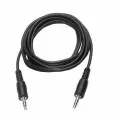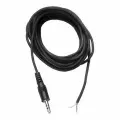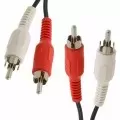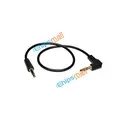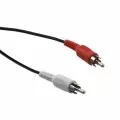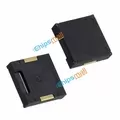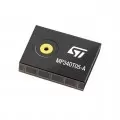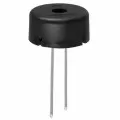OUTLINE:
Which Audio Cable Types Should I Choose
 393
393Audio cable, also known as audio connection cable, is a very common cable in life. It can transmit audio signals from mobile phones or computers to speakers, and transmit sound signals from TVs to speakers or amplifiers. It is an indispensable cable for audio and video entertainment. However, many people are confused when buying audio cables: What are the differences between different types of audio cables on the market? What kind of audio cable should I use for my device? Don't worry, Chipsmall will tell you the answer!
There are usually multiple types of audio cables depending on the connector. Different types of audio cables are suitable for different devices, so you must choose the corresponding audio cable according to the type of connector required by the device.
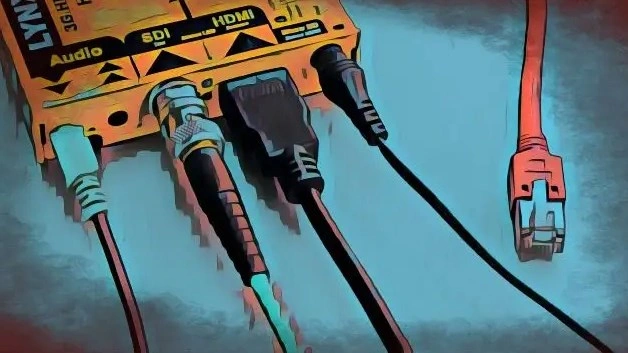
Image Source:eMastered
Importance of Audio cable
Main Understanding different cable types is crucial for music producers.
Each type of cable has a specific purpose and makes a unique contribution to the overall sound production process.
Understanding these various cables can help create a more efficient, higher-quality audio environment - which is critical for both studio recording and live performance.
16 Common Audio Cable Types
TRS audio cable
The TRS interface is an interface for transmitting audio signals. Why is it called TRS? Because the three contacts on the top of the plug are called Tip, Ring, and Sleeve. They can carry both balanced mono and unbalanced stereo signals. The balanced nature of TRS cables ensures that the audio remains free from external interference.
TRS cables are frequently used in professional audio settings for connections that need balanced cables, such as connecting audio interfaces to studio monitors.
TS audio cable
TS audio cable contact consists of two independent parts “tip sleeve”that convey a mono signal and are most typically utilized on leads for instruments such as guitars, basses and keyboards. TS cables' direct and unbalanced connection allows for a clear audio transmission route, preserving the instrument's true sound.
1/8 TRS audio cable
It is a common sound card interface. Most consumer sound cards (including onboard sound cards) use this type of interface, such as the audio interface connected to computers and mobile phones.
AES/EBU cable
The AES/EBU interface is an important standard in the field of digital audio. This standard defines a digital audio interface based on twisted pair cables, which uses a balanced transmission method and can transmit PCM-encoded audio signals.
It is currently widely used in civilian products and professional audio digital equipment, such as CD players, DAT, MD players, digital mixers, digital audio workstations, etc.
RCA cable
RCA cables and TS cables have similar structures. They are connectors widely used in radios produced by Radio Corporation of America (RCA) in the 1930s. They are also called phono connectors. They are often used to connect CDJs, turntables, and DJ mixers. Line or Phono are often seen on the jacks. If a yellow terminal is added, it can be used as an AV terminal to transmit composite video.
In a typical home entertainment system, an RCA cable may be used to link a DVD player to an AV receiver, delivering audio signals efficiently.
XLR audio cable
The XLR port was invented by James H. Cannon, the founder of Cannon Electric in Los Angeles, USA, so it is sometimes called a Cannon plug. XLR has become the industry standard for transmitting balanced audio.
XLR ports are divided into male and female, with three pins for male and three pins for female.
The most common design is 3 pins, but since XLR has a variety of uses, such as lighting control to low-voltage power supply, there are also designs with more pins, up to 10 pins, and there are also small plugs for Mini XLR. Generally used for microphone connection to sound card or speaker connection.
S/PDIF
The full name of S/PDIF is Sony/Philips Digital Interconnect Format, developed by SONY and PHILIPS. Due to its wide adoption, it has become the de facto civilian digital audio format standard. A large number of consumer audio digital products such as civilian CD players, DAT, MD players, computer sound card digital ports, etc. support S/PDIF. Many professional equipment also have interfaces of this standard.
Digital Coaxial
Digital Coaxial is an interface that uses the S/PDIF interface to output digital audio. Although the standard connector of coaxial digital cables is BNC connector, most coaxial digital cables on the market use RCA connectors. It often appears in digital mixers, karaoke machines, TVs and broadcasting equipment.
TOSLINK/Toshiba Link
TOSLINK is the abbreviation of "TOShiba-LINK" and was developed by Toshiba of Japan. It was originally used to transmit PCM audio between its own CD players and decoders, but later it became popular in CD players of other brands. It is widely used in TVs, DVD/Blu-ray and other disc players, set-top boxes, CD players, video game consoles, etc.
Speakon audio cable
Swiss connectors (Speakon) are used to connect speakers, amplifiers, and monitors in a PA system. Swiss connectors are more popular than TS and banana connectors because they lock to prevent accidental disconnection. "Speakon" is a registered trademark of Neutrik, but other manufacturers produce compatible products, usually called "twist connectors".
MIDI audio cable
It is usually used to connect recording equipment and a computer, and transmit information such as signal, strength, and sustain pedal to the computer, and is used in arranging, recording, writing scores, etc.
Daisy chain
Daisy chain cables are commonly used in guitar and bass configurations to connect many effects or stomp boxes into a single signal chain. These cables come in a variety of configurations.
D-sub
sub connector, also known as D-type connector, is a "D"-shaped connector, which is the abbreviation of D-Subminiature. D-Sub connectors have 9, 15, 25, 37 and 50 pin configurations. This multi-pin connector is commonly used in advanced analog and digital audio equipment.
Banana audio cable
A banana connector (commonly banana plug for the male, banana jack (or socket) for the female) is a single-wire (one conductor) electrical connector used for joining wires to equipment. It is similar to TS cable in appearance and size. They are, however, designed differently and are meant to connect amplifiers and speakers.
USB audio cable
USB cables are some of the most well-known and commonly utilized digital audio cords in the world, whether you're listening, creating, or simply moving data from one device to another. They come in a range of shapes and sizes, with USB-A and USB-B cables being the most common.
USB cables were developed to transfer digital audio data. They have largely supplanted MIDI cables, transmitting MIDI signals and powering bus-powered devices. They are ideal for connecting computers to digital synthesizers and audio interfaces. A single USB cable can often replace several audio and MIDI cables.
ADAT audio cable
ADAT (Alesis Digital Audio Tape) optical interface, more commonly known as ADAT Lightpipe, is a widely accepted optical fiber transmission standard for digital audio. It can transmit 8 channels of digital audio through an Alesis ADAT cable.
Where to Buy Suitable Audio Cable
When purchasing audio cables, you should pay attention to the material, shielding performance, interface type and brand reputation of the cable to ensure that you choose high-quality products.
Chipsmall Limited is comprised of a competent staff with an average of over 20 years of experience in the distribution of electronic components.

Our company is primarily concerned with the distribution of electronic components, guided by the principles of "Quality Parts, Customer Priority, Honest Operation, and Considerate Service". Main items include integrated circuits (ICs), resistors, capacitors, modules, potentiometers, IC sockets, relays, connectors, and so on. Our parts are suitable for a variety of applications, including commercial, industrial, and automotive.
FAQs
Here are some questions you may encounter when choosing different audio cable types.
Difference between analog digital audio cables
Both analog audio cables and digital audio cables transmit audio signals. But the difference is that analog audio cables transmit electrical audio signals, while digital audio cables transmit binary code digital signals.
What material is the best audio cable?
Audio cables made of high-purity oxygen-free copper and silver have excellent signal transmission performance and are suitable for use with high-quality audio equipment.
Does the length of the audio cable affect the sound quality?
The length of the audio cable has a certain impact on the sound quality. A cable that is too long may cause signal attenuation. It is recommended to choose a cable of moderate length.
Unbalanced and Balanced Audio Cables
From the specific structure and transmission method of the audio cable, the "unbalanced" audio cable adopts a single conductor transmission method, that is, a signal line and a ground line are used for signal transmission.
In the process of signal transmission, the signal line in the "unbalanced" audio cable is responsible for transmitting the audio signal, and the ground line is connected to the ground terminal of the device to reduce the influence of noise to a certain extent. The transmitted signal is generally called a shielded signal.
Conclusion
In today's digital age, whether we use TVs, monitors, or other multimedia devices, we need to consider the needs of video and audio transmission. Whether it's for work or entertainment, correctly choosing the interface that suits your needs is essential to get the best audio-visual experience. By better understanding audio cable types, you can make wise decisions when purchasing and using electronics.

Disclaimer: The views and opinions expressed by individual authors or forum participants on this website do not represent the views and opinions of Chipsmall, nor do they represent Chipsmall's official policy.

share this blog to:


